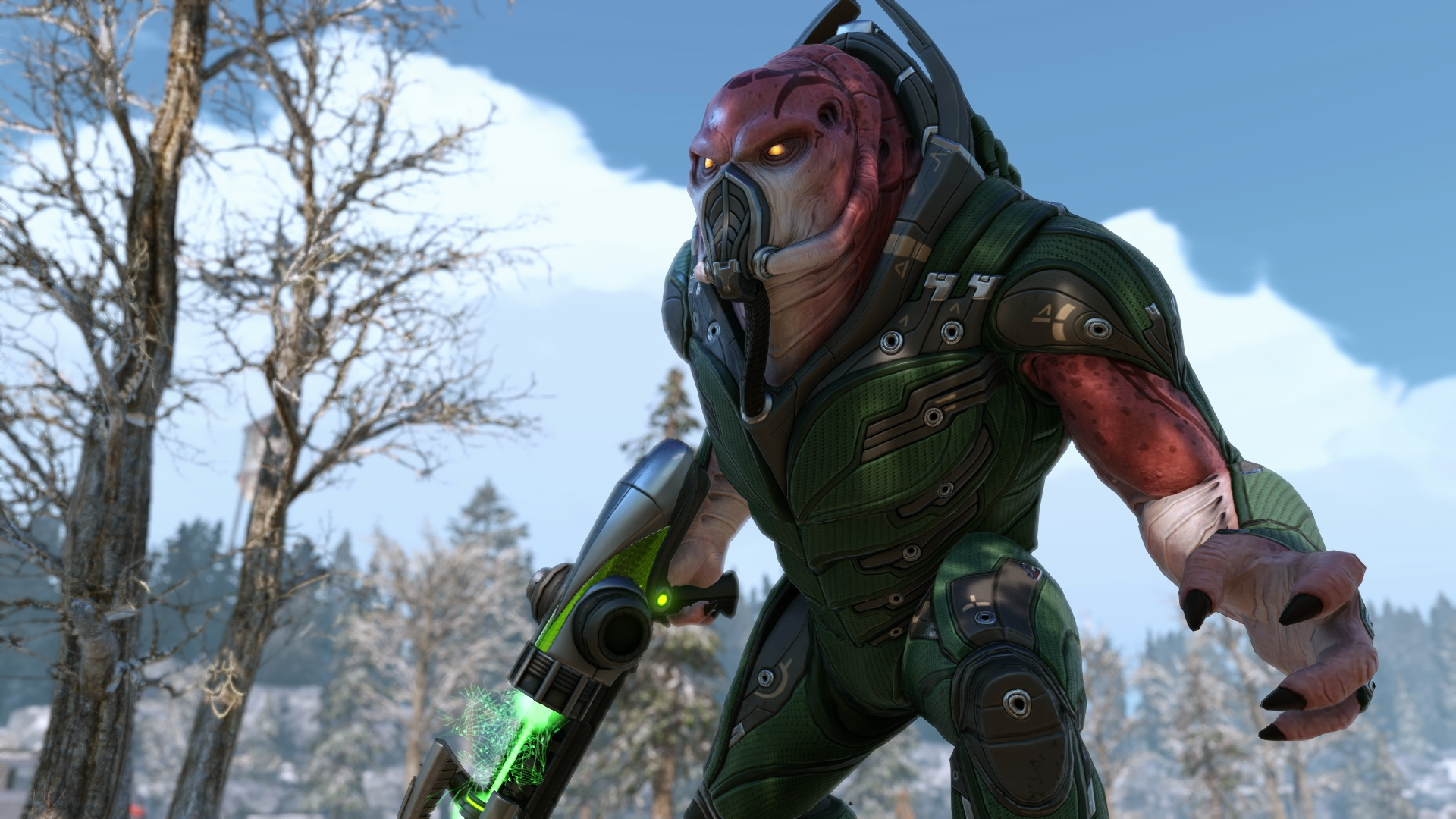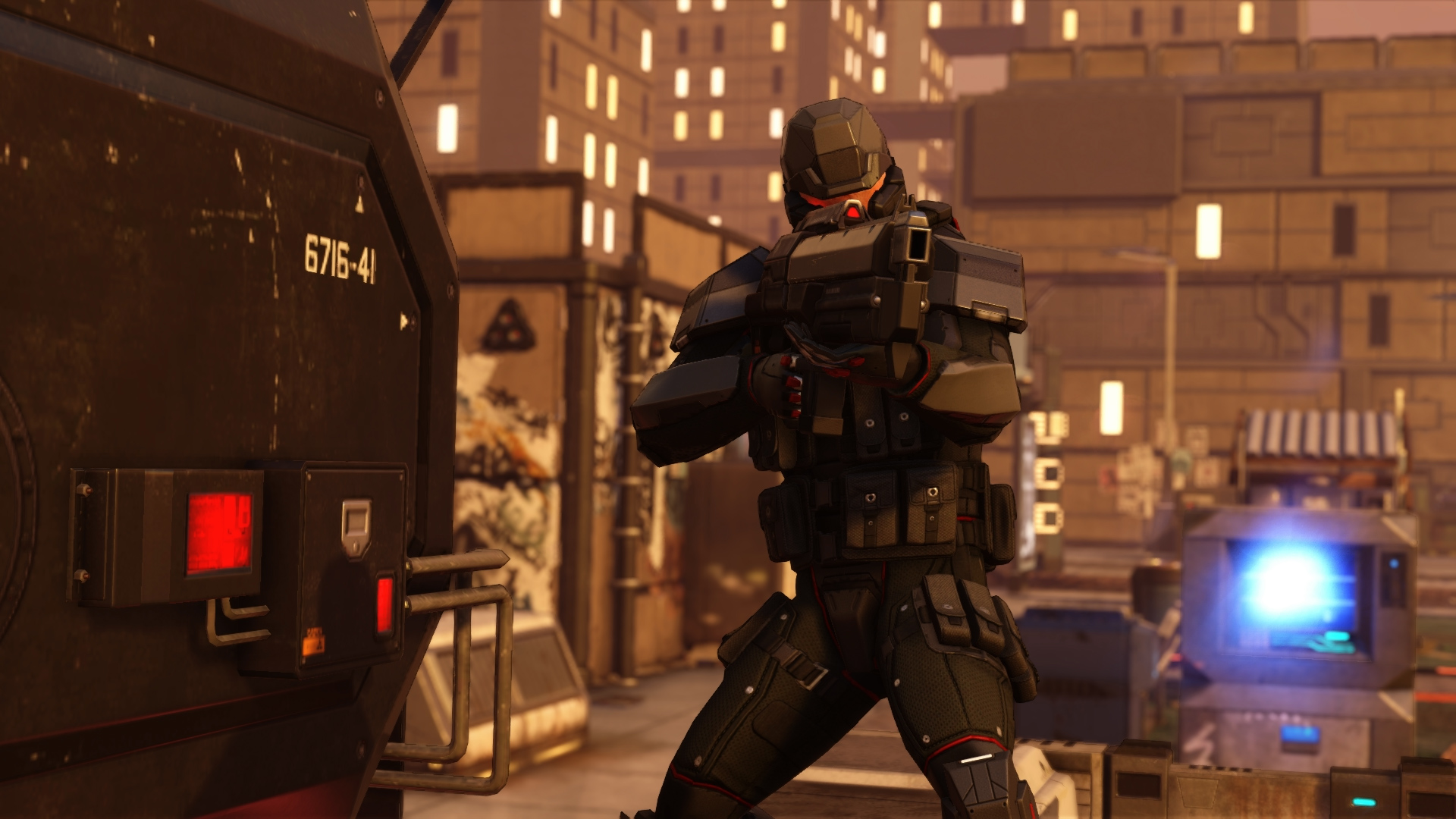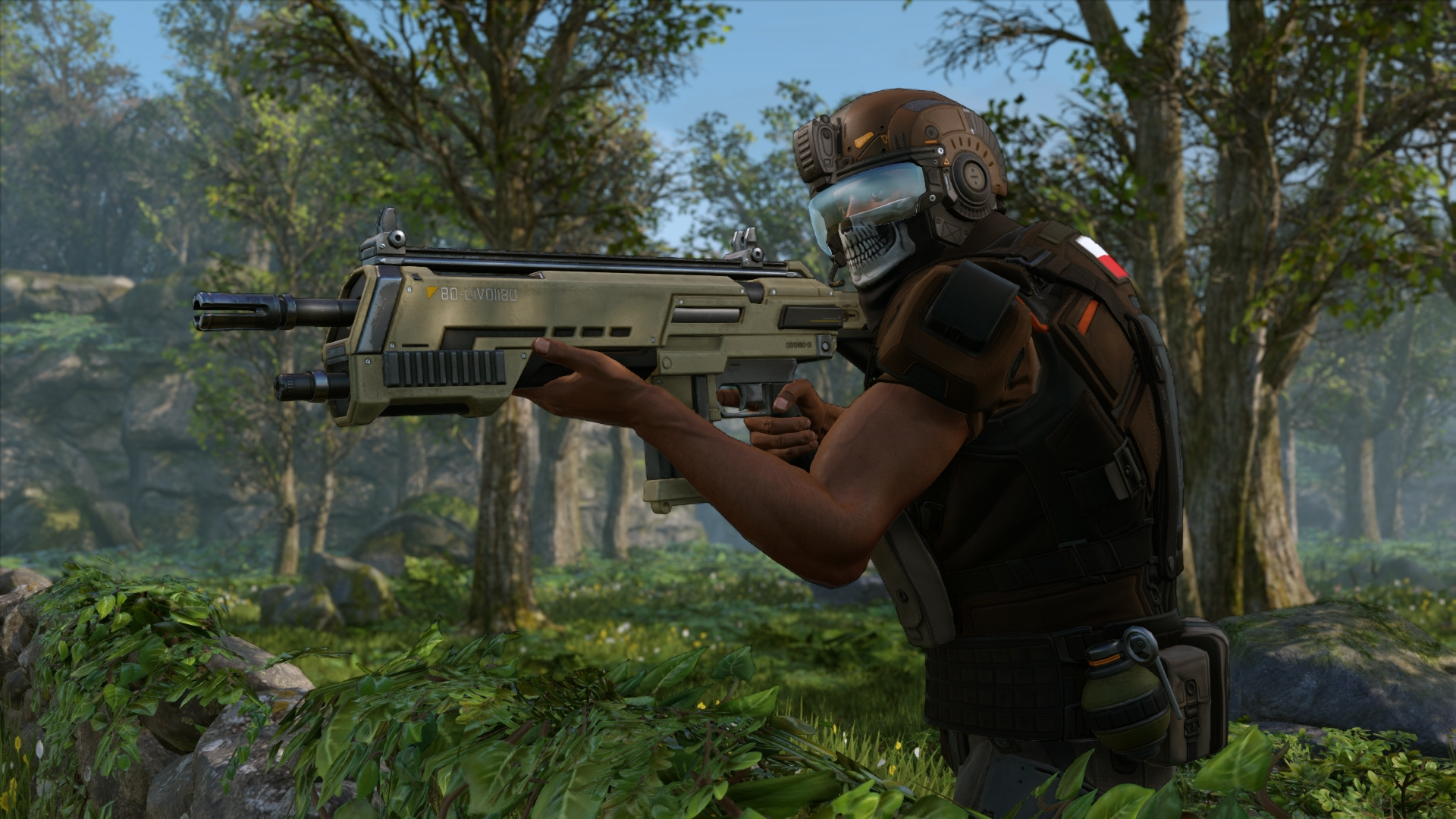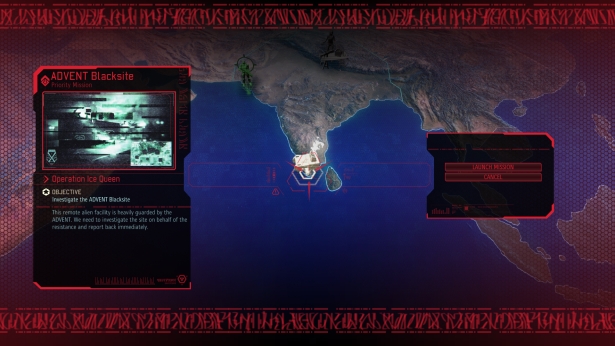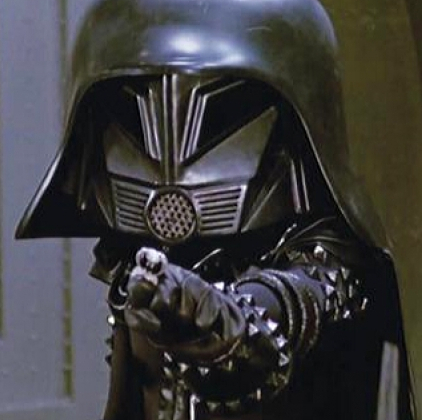Earth has changed. Twenty years have passed since world leaders offered an unconditional surrender to alien forces. XCOM, the planet’s last line of defense, was left decimated and scattered. Now, in XCOM 2, the aliens rule Earth, building shining cities that promise a brilliant future for humanity on the surface, while concealing a sinister agenda and eliminating all who dissent from their new order.
Only those who live at the edges of the world have a margin of freedom. Here, a force gathers once again to stand up for humanity. Always on the run, and facing impossible odds, the remnant XCOM forces must find a way to ignite a global resistance, and eliminate the alien threat once and for all.
- XCOM ON THE RUN: Take command of the Avenger, an alien supply craft converted to XCOM’s mobile headquarters. New open-ended gameplay lets you decide where to guide your strike team, how to grow popular support, and when to combat enemy counter-operations.
- RECRUIT RESISTANCE FIGHTERS: Five soldier classes, each with its own skill tree, let you create specific soldiers for your tactical plan.
- TACTICAL GUERRILLA COMBAT: New gameplay systems offer more tactical flexibility in combat. Use concealment to ambush enemy patrols. Loot enemies for precious gear and artifacts. Rescue VIPs and save fallen comrades by carrying them to the extraction point.
- A NEW BREED OF ENEMY: A diverse cast of enemies from powerful new alien species to the ADVENT, enforcers of the alien regime, offer a distinct tactical challenge.
- RESEARCH, DEVELOP AND UPGRADE: Configure and build rooms on the Avenger to give XCOM new capabilities on the battlefield. Use your Scientists and Engineers to research, develop and upgrade weapons and armor to fit your preferred tactics.
- EACH MISSION IS A UNIQUE CHALLENGE: Go on missions around the world, from wildlands to the heart of the alien-controlled megacities, to the depths of alien installations. There are virtually infinite combinations of maps, missions and goals.
- CREATE CUSTOM MODS: Community-focused tools allow you to create your own campaign, tactical gameplay, aliens, classes, strategy game features, and share within the Steam Workshop.
- ENGAGE IN HEAD-TO-HEAD MULTIPLAYER: Mix-and-match squads of humans and aliens and battle head-to-head on randomly-generated maps.

[u]XCOM[/u] works on multiple levels. There’s the tactical squad combat where you pray your troops make it home. There’s the strategic layer where you need to make tough decisions that’ll impact the whole war effort. But what happens when you add whole new complex systems on top of XCOM’s strategic layer? It makes the world feel even more alive in [u]XCOM 2: War of the Chosen[/u]. Joe Weinhoffer, designer on [u]War of the Chosen[/u], explains how it works and how it came about.
From the beginning, what was the goal of adding new systems to the strategy layer? And how close do you think [u]War of the Chosen[/u] got to that original vision?
Joe W. Our primary goal for the strategy layer in [u]War of the Chosen[/u] was to make the player feel more connected to the world and the resistance, both mechanically and narratively. We wanted to make the world feel more alive, responsive, and engaging by increasing direct player interaction with the resistance through strategy systems. We also wanted to add more characters and personalities to the game to give a relatable face and emotional attachment to the resistance. And of course, we were looking to add ways to increase player investment in their soldiers.
Overall, I think the new strategy systems in [u]War of the Chosen[/u] definitely achieve those goals. Covert Actions and Resistance Orders give the player new ways to constantly interact with the factions and dynamically craft their strategic game plan. The Chosen also have strategic agendas, and their monthly actions, like using Retribution on regions or sabotaging sections of the Avenger, provide new challenges to work around. And Soldier Bonds, Negative Traits, and the Photobooth allow players to push their head canon soldier narratives even further.
The faction leaders and Chosen are obviously the biggest narrative elements which help make the Geoscape livelier, but even smaller additions like the post-mission ADVENT propaganda announcements or the Resistance Radio in the bar add a lot of personality to the game. The Radio DJ is a very off-the-wall character compared to traditional XCOM personalities, so that was a bit of risk, but we’re really happy with how he turned out.
Did you have any concerns about adding all of these new complex systems to the strategy layer?
Joe W. Absolutely, especially once we realized how many systems we were thinking of adding on top of everything in the base game, and all the potential complexity that could come from their interactions! We tried to keep the new systems relatively isolated from the base game mechanics, while still allowing them to have a meaningful impact.
Covert Actions are a great example of a feature which is self-contained but provides many interesting decisions. Sending soldiers away on a mission for a few days doesn’t break any other strategy systems, but allows the player to frequently make tough choices about which soldiers to send (especially if there are risks), and which reward is most important at that moment. They also have small but important consequences in the tactical layer by encouraging players to not bring the same squad of soldiers on every mission.

You added activities there that didn’t touch the base game, but you did change others. Can you go into that a little?
Joe W. We changed or cut some of the base game mechanics to add some flexibility for the new features. One example of this is Resistance HQ. In the base game, you could purchase different scanning modes at Res HQ, and every month the resistance would sell a scientist, engineer, or soldier. The [u]War of the Chosen[/u] Factions each also have their own personal HQ, and the player has plenty of opportunities to recruit additional staff through Covert Actions. Four HQs felt too crowded, and Covert Actions made shopping at the base game Res HQ redundant, so we cut the original Res HQ and moved the scanning bonuses to the Faction HQs.
Where did you draw inspiration from for the new systems? Board games? Card games? Something else?
Joe W. The new Resistance Orders system is heavily influenced by the Policy system in [u]Civilization VI[/u] (*waves down the hall*), but we also looked at a lot of trading card games when designing the user interface and determining how the player interacts with the cards. Sending units away on remote missions for a set time is a system that pops up in a lot of video games and that was an inspiration for Covert Actions. Soldier Bonds are a feature we have wanted to add to the game for a long time, but we looked at a lot of modern RPGs with relationship systems for ideas on how to make it best fit [u]XCOM[/u].
How did you initially plan and test these new systems?
Joe W. Lots and lots of iteration and playtesting! Once we have the idea and a design for a new system, we start by implementing a very small piece of it to get the framework established and the core gameplay elements working properly. For Covert Actions, that was a simple mission with one soldier being sent away, and a basic reward of supplies. For Resistance Orders, it was setting up the code to allow the player to select a single card and activate its effects.
Once those core components are set up and feel fun, we start adding complexity to include all the planned features of the system. Risks, individual soldier rewards, and missions for multiple soldiers were all set up at this point for Covert Actions. This is normally where the bulk of design iteration will take place, as we discover certain pieces that work or don’t work well with each other, or with other systems in the game.
The final piece is to add variety into the system, which involves creating the full scope of content for the feature. This is where we implement all the different types of Covert Actions, or the individual Resistance Orders with their unique effects. The final UI assets also generally don’t get created until this point, since the design is likely to change many times throughout development as we test and play with the feature.
[b]
[/b]
What was the most difficult part of the design process for [u]War of the Chosen[/u]?
Joe W. I think the most difficult of part of designing [u]War of the Chosen[/u] was figuring out how far we could push the new systems before they became too complicated and overwhelming for the player, or created too much complexity with systems from the base game. We always have a ton of great ideas for each game, but at a certain point we need to step back and really think about what is going to create the best player experience, and then modify or cut features to reach that desired outcome.
How about an example of when you got to that stopping point?
Joe W. This was particularly true in [u]War of the Chosen[/u] for the strategy systems which impact tactical combat. We already had Dark Events in the base game, but we added Resistance Orders, SITREPs, the Lost, and the Chosen on top of them for the expansion. There are so many possible combinations that can occur, and some would create very frustrating missions if left unchecked, so we added restrictions to try and limit those moments. However, unpredictability is one of the hallmarks of [u]XCOM[/u], so we still leave plenty of room for crazy situations to keep players on their toes.
What do you think these new features add to the strategy layer? Can you go a little into how you feel this changes the way that you’d have played[u] XCOM [/u]prior to[u] War of the Chosen[/u]?
Joe W. Overall, I think the features give the player a lot more flexibility in how to implement their personal strategy for taking down ADVENT and the Chosen. Resistance Orders and Covert Actions each let the player take an active role in choosing how to strategically counter their enemies, and allow for quickly shifting tactics to counter a new threat. It makes the strategy layer a lot more dynamic than the base game, and much more engaging.
The new features also have some elements of [u]XCOM[/u] randomness for variety, which further increases the value of replaying the game. If your core strategy in one playthrough focused on having a few specific Resistance Orders, you might need to completely reevaluate in a new game where those Orders aren’t available!
What’s the one thing you hope players take out of the experience of playing [u]XCOM 2: War of the Chosen[/u]?
Joe W. We hope all the new systems, characters, and narrative elements really augment the [u]XCOM 2[/u] experience, and help the player truly feel like the commander of a global resistance force which responds to your decisions and plans, and has a real impact on the world you are trying to save.
And, as Officer Bradford will likely remind you, it is vitally important that you have a plan, because with the Chosen bolstering ADVENT’s forces and putting their own schemes into play, taking back Earth is going to be more challenging than ever before!
http://store.steampowered.com/app/593380/XCOM_2_War_of_the_Chosen/
Do you have questions for the team? Be sure to follow XCOM on Twitter and Like XCOM on Facebook to keep up to date with the latest information on XCOM 2: War of the Chosen. If you’re looking to enlist with the Resistance, join the 2K Forums!
![]()
![]()
![]()
Minimum Setup
- OS: Ubuntu 14.04.2 64-bit or Steam OS
- Processor: Intel i3-3225 3.3ghzMemory: 4 GB RAM
- Memory: 4 GB RAM
- Graphics: NVIDIA 650 (1GB). AMD R9 270 (2GB) or better
- Storage: 45 GB available spaceAdditional Notes: * Intel GPUs are not supported at time of release. * Nvidia requires 352.55 or newer drivers. * AMD requires Mesa 13.0.1 driver compiled using LLVM 3.9. * XCOM 2 War of the Chosen requirements differ to XCOM 2. please check the system requirements here before purchasing.
Recommended Setup
- OS: Ubuntu 14.04.2 64-bit or Steam OS
- Processor: Intel i7 seriesMemory: 8 GB RAM
- Graphics: NVIDIA 960 (2GB)
- Storage: 45 GB available spaceAdditional Notes: * Intel GPUs are not supported at time of release. * We recommend Nvidia 358.16 drivers for best performance in XCOM 2. * XCOM 2 War of the Chosen requirements differ to XCOM 2. please check the system requirements here before purchasing.
[ 6469 ]
[ 2503 ]
[ 1972 ]


